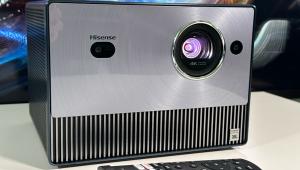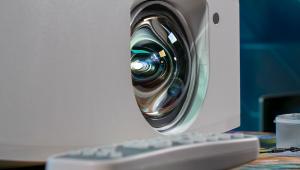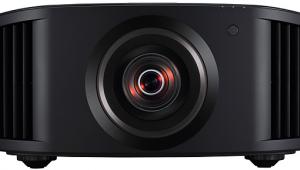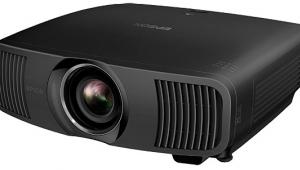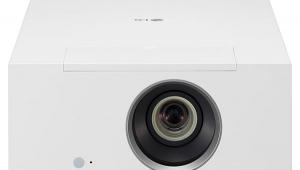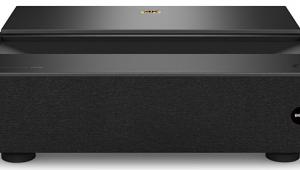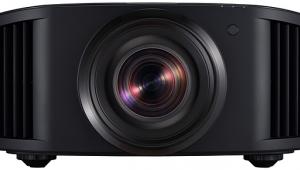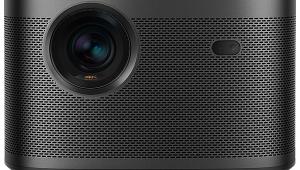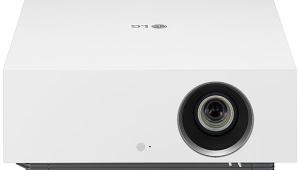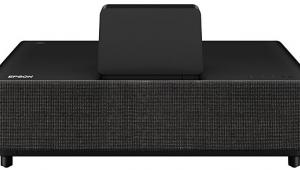BenQ PE8720 720p DLP Projector Tests and Calibration
The performance of the PE8720 on my usual battery of scaling tests ranged from good to excellent with one exception. Some interlace flicker was evident on a test for video sourced material (2:2 pulldown). But it sailed through other tests, including 3:2 pulldown recognition and resistance to jagged-edge artifacts.
The projector performed well on multiburst tests for bandwidth at all tested resolutions: component 480i/p, 720p, and 1080i, as well as 480p, 720p, and 1080i over HDMI (it will not accept a 480i HDMI source). In particular, it responded up to the maximum 37.1MHz burst in both component and HDMI at 720p and 1080i, though there was some unevenness in the bursts at that frequency. The response was strong to the maximum burst frequency in HDMI at all resolutions, but noticeably down in level, though still visible, at the maximum burst in component at 720p and 480i/p, indicating a more extended response with HDMI than component. No surprise there.
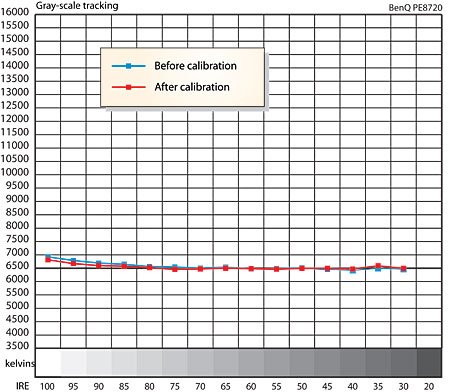
The accompanying chart shows the before and after gray scale calibration results taken with 114 hours on the lamp. While the Before settings are approximately as good as the After results, the x/y coordinates of each white point were slightly more closer to the ideal D6500 standard after calibration.
The x/y coordinates for red, green and blue were typical for a DLP projector. That is, red was respectable if a little too saturated, but both red and green were within about 10% of the ATSC standard. Blue, on the other hand, was blue rather than the purplish blue of the standard. But the eye is far less sensitive to color shifts in the blue region than in red or green.
The 3D Color Management feature (separate adjustment for hue, intensity, and saturation for the primary and secondary colors) can move the color points to a degree, but without precision test tools you're better off leaving them at the factory defaults.
The PE8720 will not display below black from its HDMI input, but it will on component. It does not clip above white on either HDMI or component.
Most projectors produce their lowest overscan on HDMI. Not so with the PE8720. On HDMI at all resolutions, and component at 480i/p, its overscan averaged about 3.5%. In component at 720p and 1080i it averaged just a bit over 1%.
I experimented with a wide range of different setups to obtain the best peak contrast ratio possible, including various combinations of iris setting and lamp output (200W or 250W—the projector's Whisper mode automatically sets the lamp to 200W). In each case I reset the Brightness and Contrast controls, before taking the contrast readings, to avoid clipping the whites or crushing the blacks. I obtained a maximum of contrast ratio of 3161:1 with the iris at minimum and the lamp at 200W. But this resulted in an unacceptably low peak white output of 6.3 foot-Lamberts on my 1.3-gain, 16:9, 78-inch wide, Stewart Studiotek 130 screen. With the lamp at 200W and the iris wide open, I obtained a peak white level of 20.9fL and a peak contrast ratio 1228:1. Ultimately I did most of my viewing with the lamp at 250W and the iris seven steps open from its minimum setting. This produced a peak contrast ratio of 2170:1 (15.2fL peak white, 0.007fL video black.
The latter setting leaves a lot of reserve light output, with two-thirds of the iris range still available. If you need a bigger screen, or need to increase the light output to compensate for lamp wear, it will be there if you begin with such a relatively conservative setting. With the iris full open and the lamp on 250W, I measured 26.5fL on my relatively small screen.
On some material I preferred opening the iris by a couple of additional steps. This slightly sacrificed contrast but perked up the image a bit. While the peak white level was fine, I found the projector's fixed gamma to be a slightly high 2.5 across much of the brightness range, decreasing to 2.2 at 90IRE. A high gamma can make for a somewhat dimmer image overall, even when the peak white level suggests more than adequate brightness. (Stated as simply as possible, gamma is the relationship between the input signal and the brightness produced by the display.)


